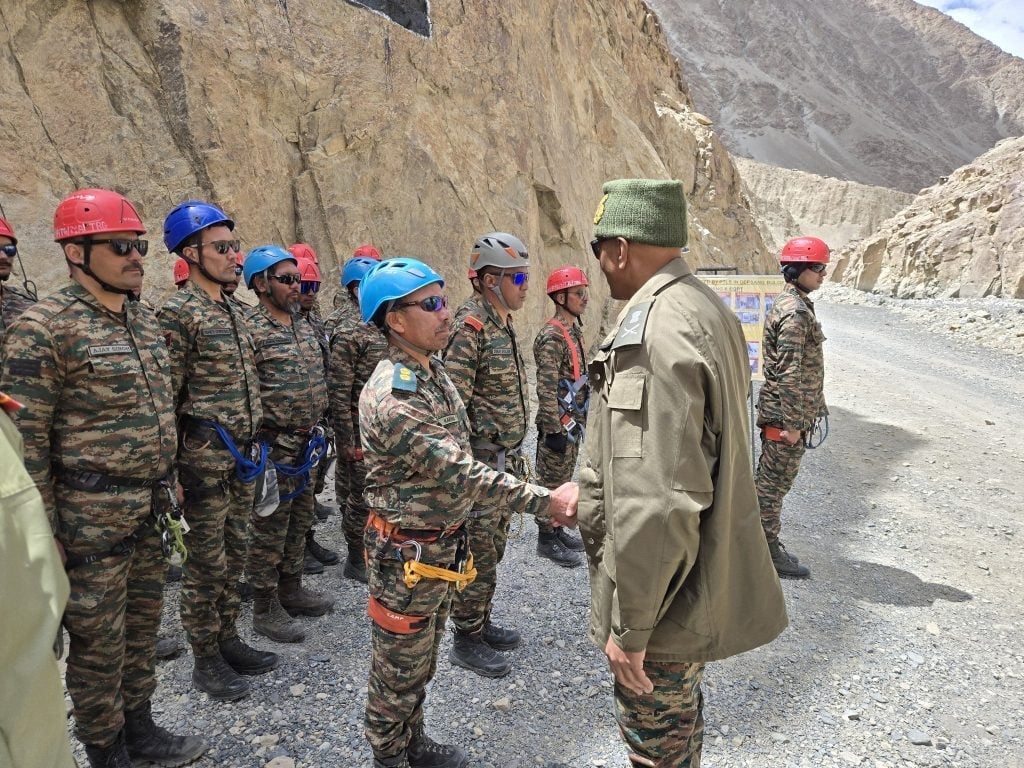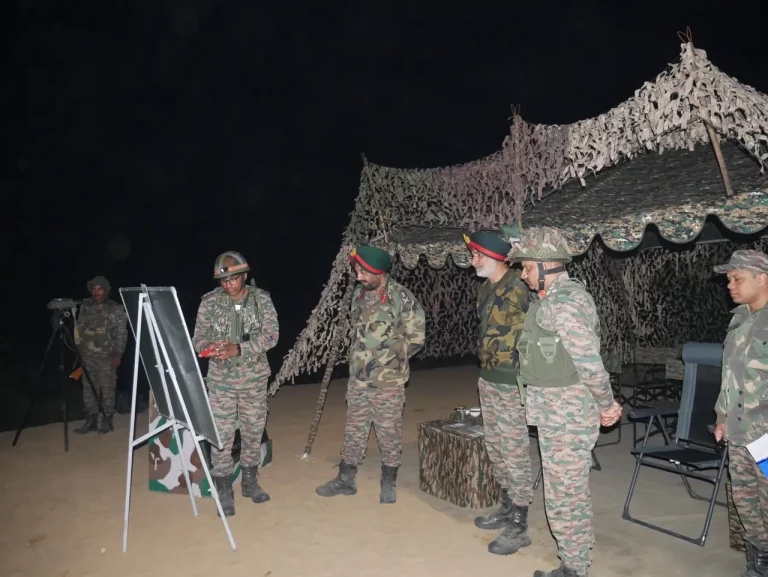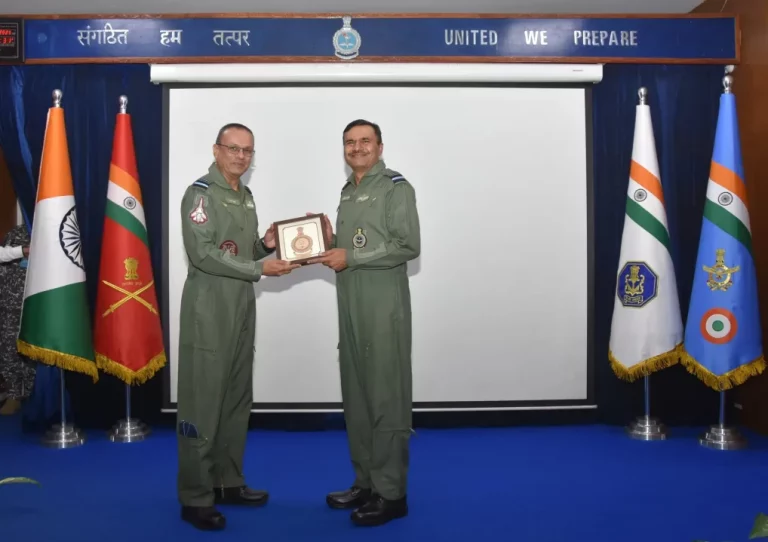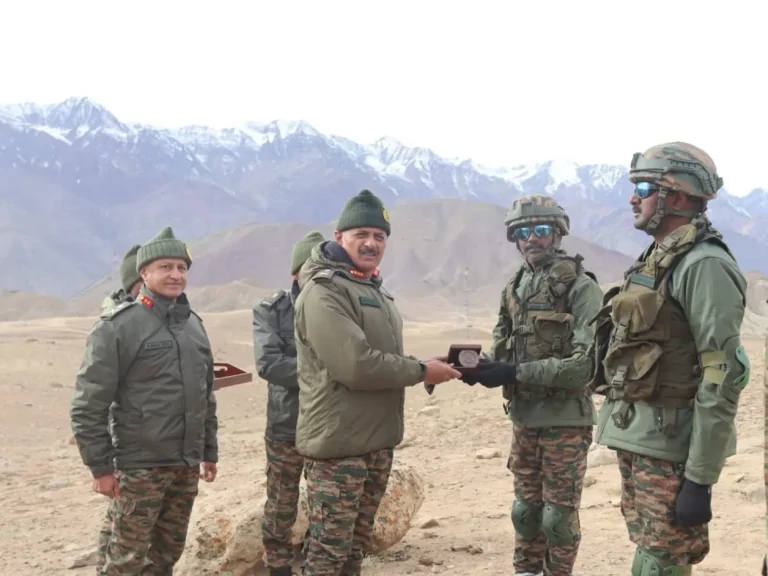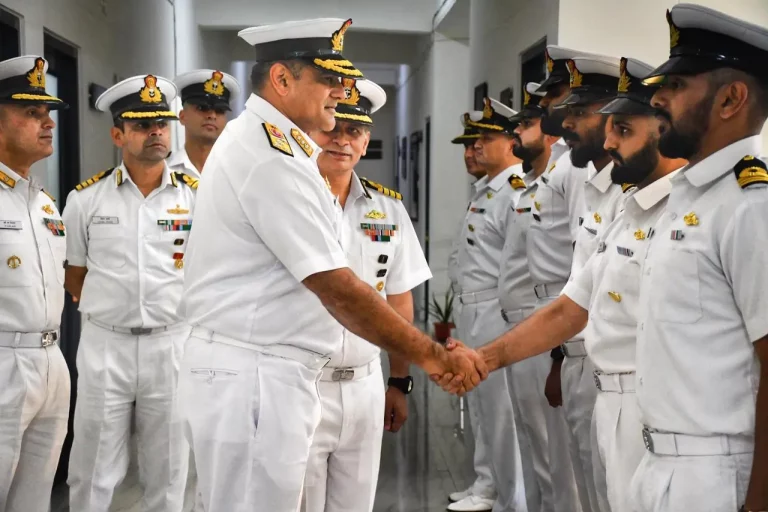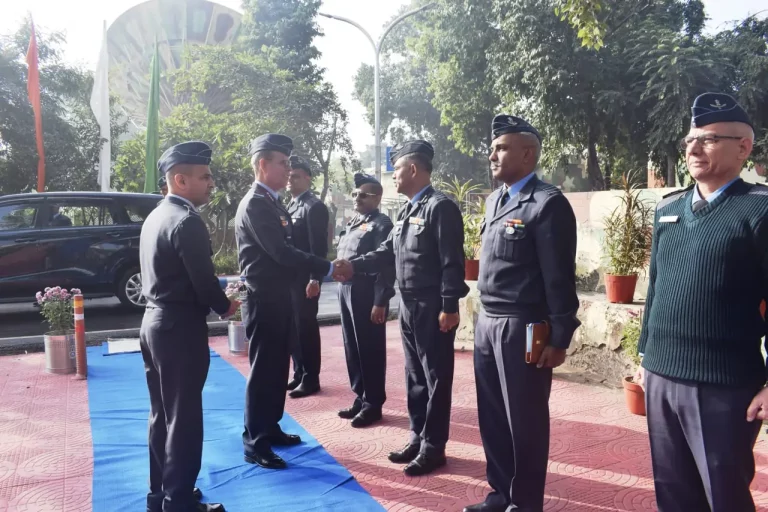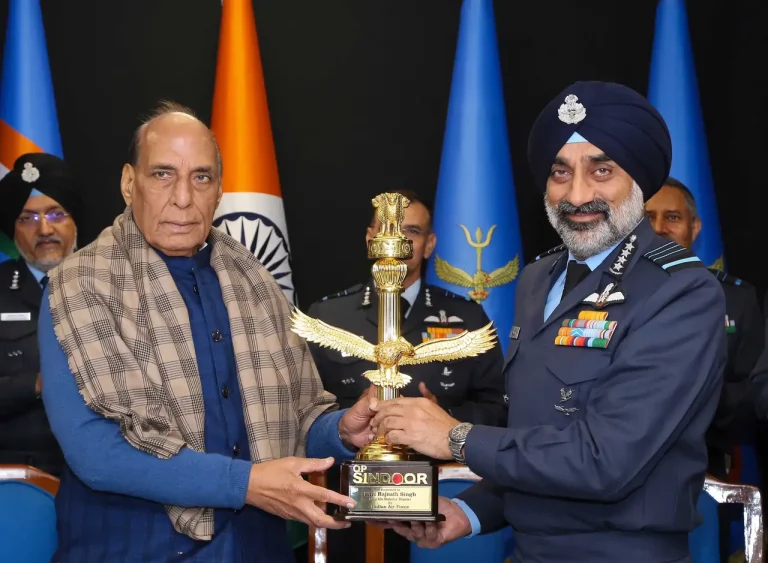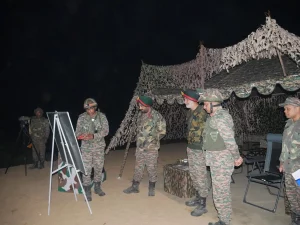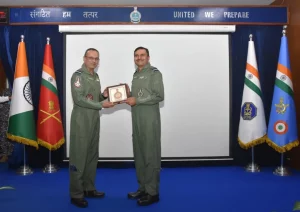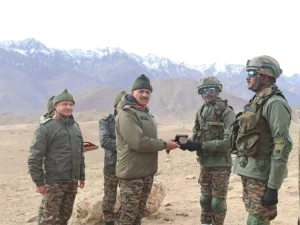In a critical effort to enhance India’s defense capabilities in Ladakh, Lieutenant General Pratik Sharma, the Army Commander of the Northern Command, recently visited the formations under the Fire and Fury Corps. This visit is particularly significant given the escalating tensions along both the western border with Pakistan and the eastern border with China, with recent ceasefire violations reported along the Line of Control (LoC) and ongoing strategic challenges along the Line of Actual Control (LAC) with China.
During his visit, Lt Gen Sharma conducted comprehensive inspections of operational deployments, employing detailed models to analyze terrain and assess India’s strategic positions within the high-altitude landscape of Ladakh. He engaged with troops stationed at forward posts, commending their resilience, commitment, and professionalism in safeguarding India’s territorial integrity under arduous conditions. He stressed the importance of maintaining a state of constant readiness and urged the soldiers to remain vigilant against any potential escalation.
The Fire and Fury Corps, based in Leh, is India’s primary formation responsible for the security of Ladakh and adjacent areas. Operating in altitudes often exceeding 15,000 feet, the Corps faces distinct environmental and logistical challenges. Soldiers undergo rigorous training at the High Altitude Warfare School (HAWS) in Gulmarg, honing skills crucial for combat in glaciated and mountainous regions. This Corps plays a pivotal role in defending sensitive locations such as the Siachen Glacier and the Galwan Valley.
Lt Gen Sharma’s visit underscores the strategic significance of the Northern Command, which encompasses India’s entire northern frontier, stretching from the LoC in Jammu and Kashmir to the LAC in eastern Ladakh. A seasoned infantry officer with extensive operational experience, he brings a wealth of leadership to the command, especially pertinent given India’s complex two-front security challenges.
This review comes on the heels of several ceasefire violations by Pakistan earlier in May, marked by cross-border firing that persisted for five consecutive nights. The situation further intensified following a terror attack in Pahalgam on May 1, which led India to suspend the Indus Waters Treaty with Pakistan and initiate heightened counter-terror operations in Kashmir. Parallelly, strategic tensions with China remain elevated, particularly in Eastern Ladakh, where India has deployed T-72 and T-90 main battle tanks to counter the People’s Liberation Army’s Type 15 light tanks, specifically designed for high-altitude combat.
The visit serves as a reaffirmation of the Indian Army’s unwavering commitment to defending national interests in one of the most strategically significant and challenging regions. As the Fire and Fury Corps continues to lead India’s military strategy, the Northern Command remains vigilant, ensuring that its troops are prepared to address evolving threats from both western and eastern adversaries.
